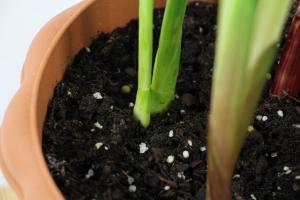Are You Supposed to Take Plants Out of Plastic Pots?
When you buy a new plant, it is often in a plastic pot. Many people wonder if they are supposed to take the plant out of the plastic pot and transplant it into a different container. The answer is not always straightforward, and it depends on several factors.
What Type of Plastic Pot Is It?
The first thing to consider when deciding whether to take a plant out of a plastic pot is what type of pot it is. If the plastic pot does not have any drainage holes, it is definitely not suitable for long-term planting. Plants need proper drainage to thrive, and without drainage holes, water can accumulate at the bottom of the pot, leading to root rot or drowning the plant.
On the other hand, if the plastic pot does have drainage holes, it can be used as a long-term container. However, it is still a good idea to examine the pot itself. If the pot is flimsy or appears to be low quality, you may want to consider repotting the plant into a sturdier container.
Is the Plant Root-Bound?
Another factor to consider is whether the plant is root-bound. A root-bound plant occurs when the roots outgrow the container's space, becoming tangled and coiled. This can eventually lead to stunted growth, a lack of nutrients, and even death if left unchecked.
If the plant is root-bound, it is essential to repot it into a larger container as soon as possible. When repotting, you will need to take the plant out of its plastic pot and loosen the roots before placing it in the new container.
Is It the Right Time to Repot?
Timing is another vital consideration when deciding whether to take a plant out of a plastic pot. If the plant is currently in a dormant or resting phase, it is generally not the best time to repot. Similarly, plants in the middle of growing or blooming should not be repotted unless it's an emergency.
The best time to repot most houseplants is in the spring or early summer when the plant is just beginning its active growing season. This timing can give the plant the best chance of thriving after repotting.
Conclusion
Whether to take a plant out of a plastic pot depends on the type of pot, the plant's root condition, and the timing of repotting. If the plastic pot has proper drainage and the plant is not too root-bound, it can remain in the container for the long term. However, if the pot lacks drainage and the plant is root-bound, it should be repotted as soon as possible. Timing is also essential when repotting, and it is best to do so in the spring or early summer when the plant is actively growing.
Overall, taking plants out of plastic pots is often necessary for long-term health and growth, but it is vital to consider the factors mentioned above to determine the right course of action for your plant.

 how many times do yo...
how many times do yo... how many planted tre...
how many planted tre... how many pine trees ...
how many pine trees ... how many pecan trees...
how many pecan trees... how many plants comp...
how many plants comp... how many plants can ...
how many plants can ... how many plants and ...
how many plants and ... how many pepper plan...
how many pepper plan...





























